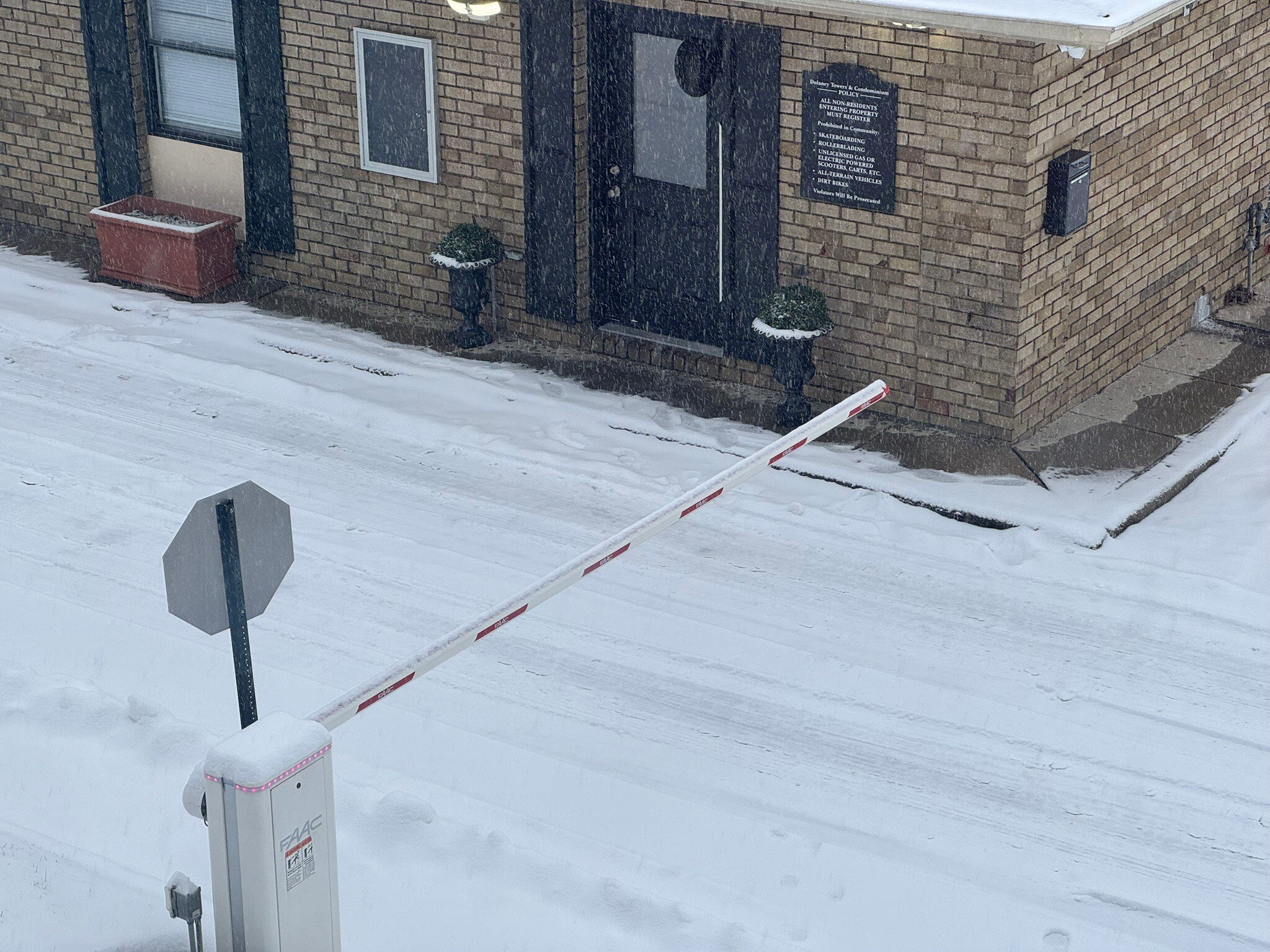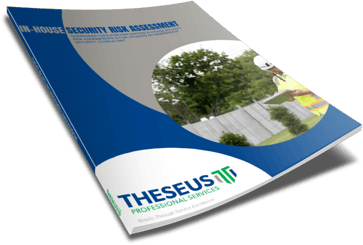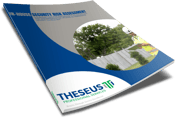3 min read
Re-Evaluating Security Systems Performance During Harsh Weather Events
![]() Theseus Team
:
Jan 6, 2025 10:05:42 AM
Theseus Team
:
Jan 6, 2025 10:05:42 AM

Winter storms and other harsh weather events pose significant challenges for security systems. Snow, ice, wind, driving rain, and low temperatures can compromise the performance of various components, exposing vulnerabilities that may not be apparent under normal operating conditions.
Below, we outline the key security systems most susceptible to harsh weather and how to mitigate their vulnerabilities.
Security Cameras
Complications:
-
Snow and ice accumulation can obscure camera lenses, reducing visibility and rendering the footage unusable.
-
Low temperatures can affect the functionality of cameras not rated for extreme cold.
-
Glare from snow or limited lighting conditions during storms can degrade image quality.
Recommendations:
-
Verify that cameras have been installed with with built-in heaters or weatherproof housings designed for extreme conditions. You may be surprised how often indoor cameras find their way to outdoor environments.
-
Use cameras with advanced features such as infrared illumination or low-light performance to improve visibility during storms. You may actually be surprised to find how well your cameras do with a white covering on the ground. Take note of the performance difference. You may decide to add more lighting once the snow has melted.
-
Regularly inspect and clean camera lenses and housings to prevent snow or ice buildup. Be sure it's not just sidewalks that get attention during the snow.
Fence Detection Systems
Complications:
-
Ice buildup on fences can mimic tampering signals, causing false alarms.
-
Snowdrifts may obscure fences entirely, making detection systems ineffective.
Recommendations:
-
Be sure to install systems that don't need to be calibrated. Changing sensitivity settings to account for environmental factors during winter may be a weakness in the solution design.
-
Use systems with advanced algorithms that can differentiate between weather-related disturbances and actual breaches.
-
Conduct regular inspections to ensure the system remains operational and free from obstructions.
Microwave Detection Systems
Complications:
-
Heavy snowfall and drifting can interfere with microwave signals, causing detection errors.
-
Ice and snow accumulation on transmitters and receivers can degrade system performance.
- Accumulating snow impact detection zones and cause nuisance or missed alarms.
Recommendations:
-
Keep microwave zones free of snow accumulation.
-
Use weather-resistant enclosures to protect sensors from ice and moisture.
-
Test the system periodically during inclement weather to ensure proper operation.
Point-to-Point Wireless Network Connectivity
Complications:
-
Snow and ice can attenuate wireless signals, reducing the effectiveness of point-to-point connections.
-
High winds may misalign antennas, disrupting network connectivity.
Recommendations:
-
Use high-gain antennas with robust alignment mechanisms to withstand strong winds.
-
Opt for frequency bands less susceptible to weather-related attenuation.
-
Regularly inspect and adjust antennas to ensure optimal alignment and performance.
Other Weather-Sensitive Systems
Access Control Systems:
-
Frozen card readers or biometric scanners can impede entry, causing delays or lockouts. Mitigation: Install weatherproof readers and provide alternative access options during extreme conditions.
Power Supply Systems:
-
Snowstorms can lead to power outages, compromising the operation of security systems. Mitigation: Invest in backup power solutions such as generators or uninterruptible power supplies (UPS).
Perimeter Lighting:
-
Reduced visibility during storms highlights the importance of reliable lighting. Mitigation: Use LED lights with weather-resistant enclosures and integrate lighting with motion detection for efficiency.
Best Practices for Weather Preparedness
-
Regular Maintenance: Schedule frequent inspections and maintenance to identify and address weather-related vulnerabilities.
-
System Testing: Conduct real-world weather scenarios to test system performance and ensure reliability.
-
Redundancy Planning: Deploy backup systems to maintain functionality during adverse conditions.
-
Vendor Support: Work with security system vendors to ensure your equipment is rated for harsh weather and understand warranty coverage for weather-related damages.
Harsh weather events are an unavoidable reality that can significantly impact the performance of security systems. Proactive evaluation and mitigation strategies are essential to maintain security and prevent operational disruptions during snowstorms and other extreme conditions. By addressing these vulnerabilities now, you can ensure your security infrastructure remains resilient in the face of nature’s challenges.
 BONUS: DOWNLOAD OUR FREE IN-HOUSE SECURITY RISK ASSESSMENT CONSIDERATIONS GUIDE
BONUS: DOWNLOAD OUR FREE IN-HOUSE SECURITY RISK ASSESSMENT CONSIDERATIONS GUIDE
Security professionals are constantly looking for innovative ways to secure their facility and provide a safe environment within their budget. And, they are also constantly looking for resources to help them achieve that mission while expert advice is hard to come by.
Fortunately, we have released a considerations guide that will help security professionals perform their own in-house security risk assessment.
|
What's Inside? This guide is intended to assist you with performing an in-house physical security risk assessment. In many cases, assistance from a third-party expert, like Theseus Professional Services, is required. Identification of missing or inadequate physical security measures that safeguard assets (people, property, and information) and critical business functions is of paramount importance. The findings of a security risk assessment are used to measure and communicate the level of risk to the organization.
|



